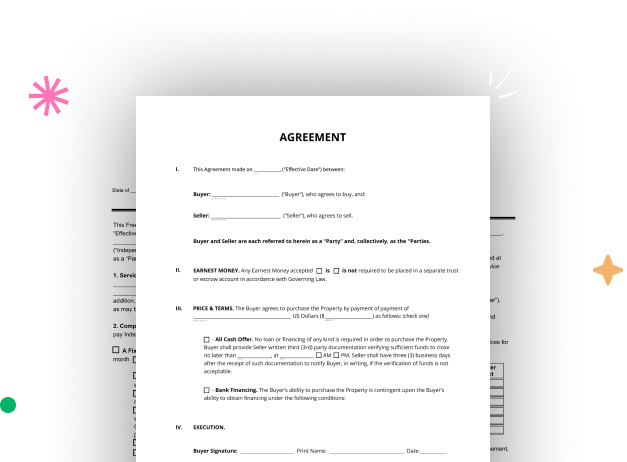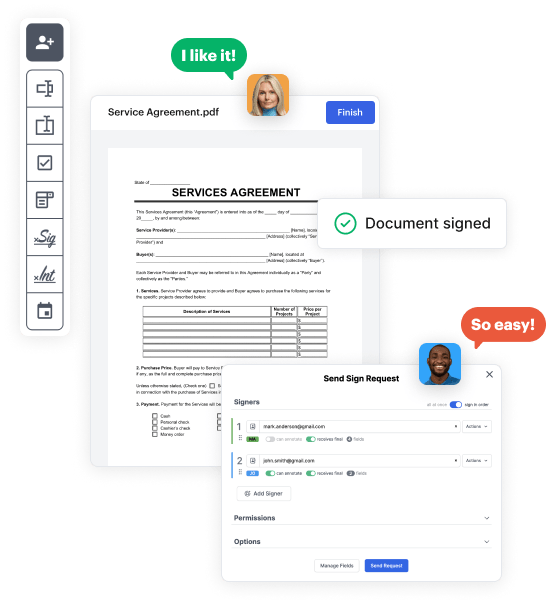

First, sign in to your DocHub account. If you don't have one, you can easily register for free.
Once signed in, go to your dashboard. This is your main hub for all document-based tasks.
In your dashboard, select New Document in the upper left corner. Opt for Create Blank Document to craft the United States Real Estate Legal Document from scratch.
Place numerous elements like text boxes, photos, signature fields, and other interactive areas to your form and assign these fields to particular recipients as needed.
Customize your form by incorporating walkthroughs or any other vital details leveraging the text option.
Attentively go over your created United States Real Estate Legal Document for any errors or needed adjustments. Leverage DocHub's editing capabilities to enhance your document.
After finalizing, save your work. You can opt to retain it within DocHub, transfer it to various storage solutions, or forward it via a link or email.